Range Rover Evoque: Inner Back Panel Assembly
Removal
NOTES:
The inner back panel assembly is manufactured from mild steel.
The panel is serviced less its weld studs.
The new service panel is not fully spot welded when supplied.
It is necessary to remove a section of one rear lamp mounting panel to enable removal and installation of the inner back panel assembly.
1. The inner back panel assembly is replaced in conjunction with:
- Rear bumper cover
- Rear bumper
- Back panel
- Rear lamp mounting panels
- Rear bumper mounting
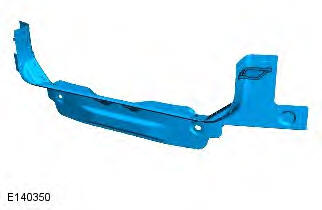
2. For additional information relating to this repair procedure please see the following: For additional information, refer to: Health and Safety Precautions (100-00 General Information, Description and Operation) / Body Repairs (501-25A Body Repairs - General Information, Description and Operation) / Corrosion Protection (501-25B Body Repairs - Corrosion Protection, Description and Operation) / Body and Frame (501-26 Body Repairs - Vehicle Specific Information and Tolerance Checks, Description and Operation) / Standard Workshop Practices (100-00 General Information, Description and Operation).
3. Remove the back panel.
For additional information, refer to: Back Panel (501-30A Rear End Sheet Metal Repairs - 3-Door, Removal and Installation).
4. NOTE: A larger section of the rear lamp mounting panel needs to be removed on one side to enable installation of the inner back panel. Remove a section of the rear lamp mounting panel.
For additional information, refer to: Rear Lamp Mounting Panel (501-30A Rear End Sheet Metal Repairs - 3-Door, Removal and Installation).
5. Remove the rear bumper mountings For additional information, refer to: Rear Bumper Mounting (501-30A Rear End Sheet Metal Repairs - 3-Door, Removal and Installation).
6. NOTE: On reinstallation of the liftgate striker plate torque bolts to 25Nm. Remove the liftgate striker plate.
7. NOTE: Some of spot welds may already be drilled out in the removal of the rear lamp mounting panel section. Drill out the spot welds where required.
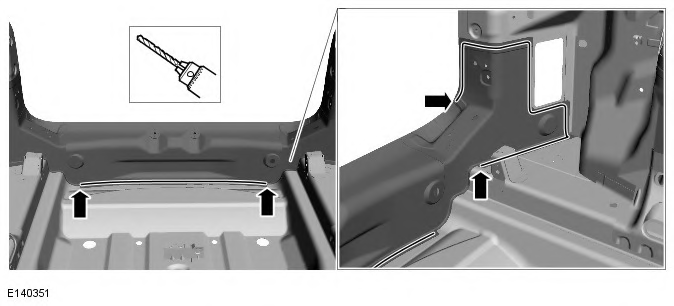
8. Separate the joints and remove the old panel, also releasing the NVH components.
Installation
1. NOTE: Use the removed panel as reference for spot weld location and quantity. Install the missing spot welds to the new inner back panel assembly before installation.
2. Prepare the old and new panel joint surfaces, including the NVH components.
3. NOTE: With panel in position check for access to spot weld the joints. Offer up the new panel and clamp into position. Check alignment, if correct, proceed to next step, if not, rectify and recheck before proceeding.
4. Remove the new panel.
5. NOTE: The graphic shows all joints, only drill for MIG plug welds where there is no access to spot weld. Drill holes in new panel ready for MIG plug welding where required.
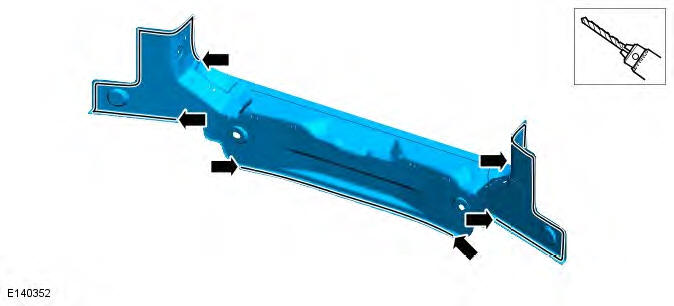
6. Deburr MIG plug locations in new panel.
7. NOTE: If spot welds are being installed in a joint that originally contained adhesive, the adhesive must be reinstated.
Apply panel bonding adhesive to spot welded/bonded areas as indicated. Use the bond path shown in the graphic as a guide, the panel bond adhesive must only be applied in the areas where spot welding is accessible for the installation of the new panel. It is not to be applied in any areas of MIG welding/brazing installation joints, leave a 30mm gap, so it does not affect the MIG weld/braze joint on installation.
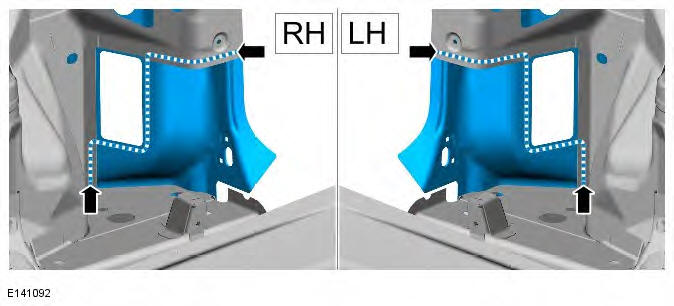
8. Apply sealer adhesive to the NVH components as indicated.
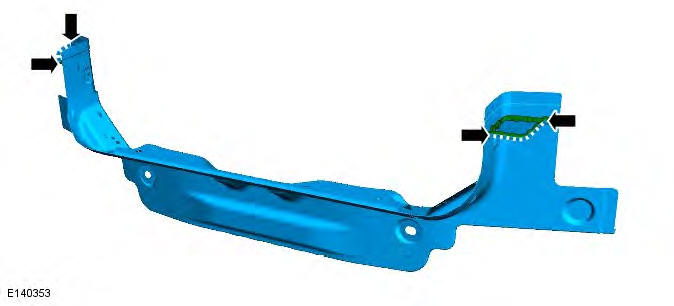
9. NOTE: Take care when offering up new panel that the sealer adhesive is not removed from the NVH components. Offer up the new panel and clamp into position. Check alignment, if correct, proceed to next step, if not, rectify and recheck before proceeding.
10. NOTE: Where there is no access to spot weld then MIG plugs must be installed. Spot weld where required.
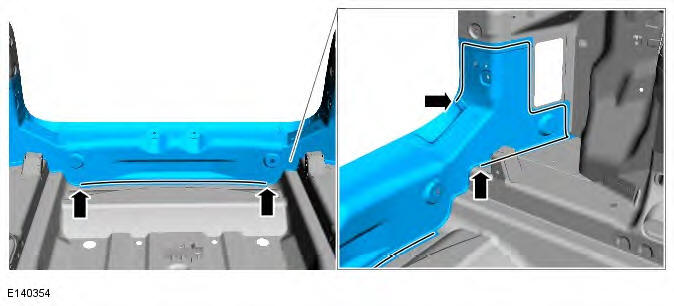
11. MIG plug weld where required.
12. Dress the MIG plug welds.
13. LH Only.
Prepare the new panel and install the weld studs in their original locations. The measurements provided in the graphic are to be used as a guide only, the components that are located/fixed to these weld studs must be offered up and cross checked for alignment prior to the installation of the weld studs to the new panel.
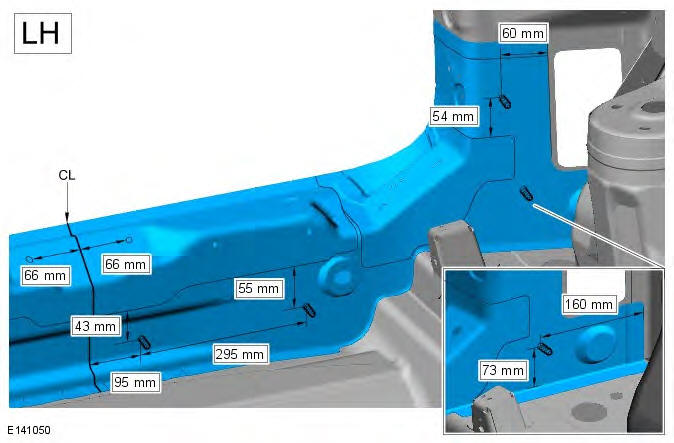
14. RH Only.
Prepare the new panel and install the weld studs in their original locations. The measurements provided in the graphic are to be used as a guide only, the components that are located/fixed to these weld studs must be offered up and cross checked for alignment prior to the installation of the weld studs to the new panel.
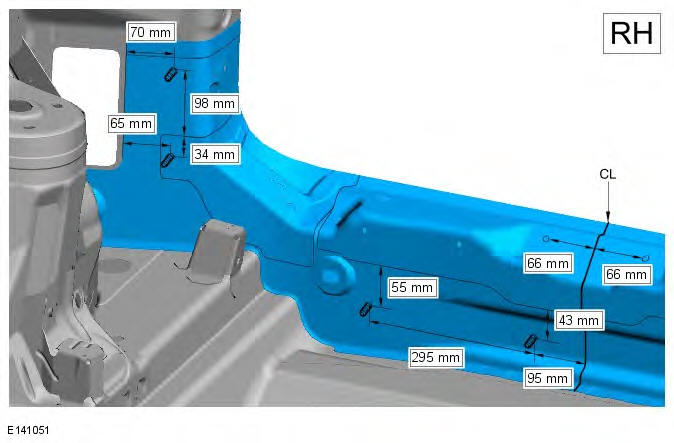
15. Apply a zinc rich primer to any bare metal surfaces at this stage.
16. The installation of associated panels and mechanical components is the reverse of removal.

